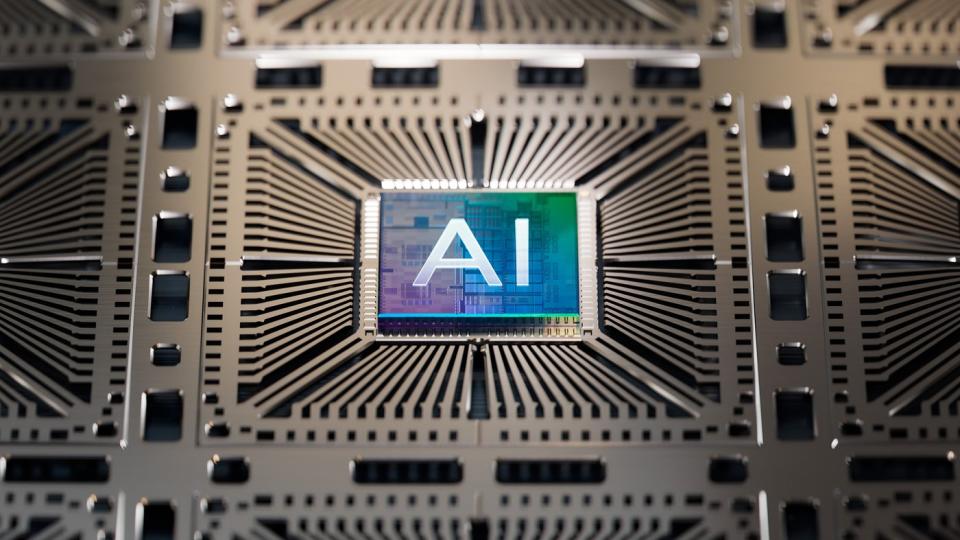Consulting group Bain & Company recently published a sweeping report on the state of technology, which included the prediction of a possible chip shortage in the coming years. This shortage could come as demand for semiconductors needed for the current artificial intelligence (AI) infrastructure buildout continues to surge, combined with the potential of a smartphone and PC upgrade cycle.
Given the comments from large tech companies involved in the AI infrastructure buildout and the exponential need for more computing power from AI models, combined with the need for more powerful smartphones and PCs to run AI applications, there certainly appears to be a lot of chip demand coming in the future. At the same time, increasing chip manufacturing capacity takes time, with it taking years to build a new foundry.
As such, this prediction doesn’t seem like a big stretch. Let’s look at three stocks that could nicely benefit from a chip shortage.
Nvidia
The graphic processing units (GPUs) from Nvidia (NASDAQ: NVDA) are the most sought-after semiconductor chips in the market today. Its chips are used for AI model training and inference within data centers, and their demand is currently insatiable. If there is a chip shortage in the coming years, you can bet that the demand for Nvidia’s chips would be partly responsible.
The company currently has an over 80% market share in the GPU space. Nvidia has created a wide moat through its CUDA software platform, which long ago became the standard on which developers would program GPUs and is what most developers have been trained to use. At the same time, it has sped up its development cycle for GPUs from two years to one to help ensure that it stays at the technological forefront.

If there is an impending chip shortage, it would demonstrate that the bearish case against Nvidia, which is that demand will slow after an initial burst of AI infrastructure spending, likely falls flat. At the same time, a chip shortage likely gives Nvidia even more pricing power than the considerable amount it already wields.
As an added bonus, Nvidia’s stock is relatively inexpensive, trading a forward price-to-earnings ratio (P/E) of only about 31 based on next year’s analyst estimate and a price/earnings-to-growth ratio (PEG) of about 0.8. A PEG under 1 is typically considered undervalued, and growth stocks often have PEGs well above 1.
Taiwan Semiconductor Manufacturer
As the largest semiconductor manufacturer in the world, Taiwan Semiconductor Manufacturer (NYSE: TSM)or TSMC for short, produces more chips than any other company. If there is a chip shortage, that means that demand for its services would be strong and that its foundries (chip manufacturing plants) would likely be running at or near full capacity.
Story continues
Semiconductor manufacturing is a high fixed-cost business, so high demand and capacity utilization are a must to keep margins high. A tight supply and demand environment also increases pricing power. TSMC has already been driving prices higher for its newer chip manufacturing processes over the past few years, and the company is expected to nicely raise prices next year as well. A very tight supply demand environment will only enhance its pricing buyer.
A chip shortage caused by high demand also means the need for more capacity, which TSMC is working to increase. It is building new fabs in the United States, Japan, and Germany. However, new fabs aren’t built overnight and can take a couple of years to build. So if there is a chip shortage that means its new fabs would likely ramp to capacity pretty quickly once they come online. The company is also working to shrink chip sizes. While this benefits chip designers with lower power consumption and higher speeds, it also allows more chips on a wafer, increasing capacity.
With Apple, Nvidia, and AMD as its three largest customers, TSMC would benefit from continued AI infrastructure spending and a hardware upgrade cycle.
Ultimately, though, if there is a chip shortage, as the leading semiconductor contract manufacturer in the world, the company would likely play a big role in being part of the solution to fix the shortage.
TSMC stock is also attractively priced with a forward PE of 22 based on next year’s analyst estimate and a PEG of about 1.
ASML
If there is a short shortage due to a lack of capacity, that means chip manufacturers are going to need to increase capacity, and in order to do that they will need more of the equipment used to manufacturer chips. And the company at the forefront of semiconductor manufacturing equipment is the Netherlands’ ASML (NASDAQ: ASML).
The semiconductor equipment manufacturing business is a lumpy one, and ASML is currently in the midst of a more transitional year as the industry digests the current supply of certain logic and memory chips. Part of this stems from weaker smartphone and PC sales, but if AI leads to a refresh cycle as more powerful hardware is needed to run AI applications, then some of these markets should improve.
Meanwhile, the company has recently introduced a new high numerical aperture extreme ultraviolet lithography, or high NA EUV, system to help improve chip manufacturing productivity and lower production costs. It shipped its second of these systems in Q2 and said interest is high for the pricey new system.
ASML expects an industry upturn in 2025, and any chip shortage would likely lead to further increased demand for its equipment.
As with Nvidia and TSMC, ASML trades at an attractive valuation. Based on 2025 analyst estimates, its forward P/E is 26, and its PEG is 0.8.
Should you invest $1,000 in Nvidia right now?
Before you buy stock in Nvidia, consider this:
The Motley Fool Stock Advisor analyst team just identified what they believe are the 10 best stocks for investors to buy now… and Nvidia wasn’t one of them. The 10 stocks that made the cut could produce monster returns in the coming years.
Consider when Nvidia made this list on April 15, 2005… if you invested $1,000 at the time of our recommendation, you’d have $716,988!*
Stock Advisor provides investors with an easy-to-follow blueprint for success, including guidance on building a portfolio, regular updates from analysts, and two new stock picks each month. The Stock Advisor service has more than quadrupled the return of S&P 500 since 2002*.
See the 10 stocks »
*Stock Advisor returns as of September 30, 2024
Geoffrey Seiler has no position in any of the stocks mentioned. The Motley Fool has positions in and recommends ASML, Advanced Micro Devices, Apple, Nvidia, and Taiwan Semiconductor Manufacturing. The Motley Fool has a disclosure policy.
3 Stocks to Buy Ahead of a Potential Chip Shortage was originally published by The Motley Fool




















